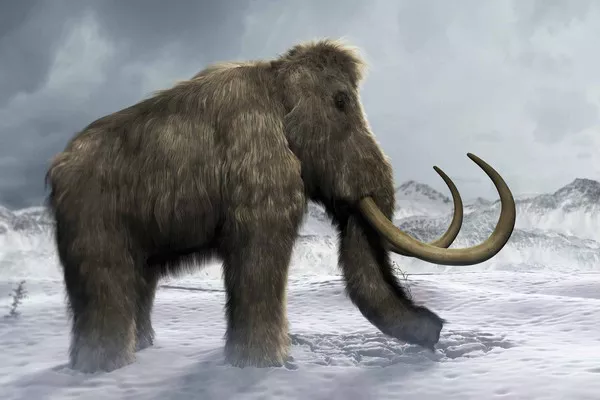In the annals of Earth’s history, there have been numerous magnificent creatures that have roamed the lands, seas, and skies. Among these ancient titans, Paraceratherium stands out as one of the most colossal mammals ever to walk the Earth. This towering herbivore, often dubbed the “giraffe of the Miocene,” captivates the imagination with its immense size and fascinating evolutionary history. In this exploration, we delve into the world of Paraceratherium, uncovering its origins, characteristics, behavior, and ultimate extinction.
Origins and Evolution of Paraceratherium:
Paraceratherium, belonging to the family Hyracodontidae, lived during the Oligocene and Miocene epochs, approximately 34 to 23 million years ago. Its lineage traces back to the early ancestors of modern rhinoceroses, but Paraceratherium itself evolved into a distinct and remarkable creature. Fossil evidence suggests that its closest living relatives are the odd-toed ungulates such as horses and rhinoceroses.
The evolutionary path of Paraceratherium led to its extraordinary size, likely as an adaptation to environmental conditions and available resources. Over millions of years, this megaherbivore underwent significant changes in body size and structure, culminating in its massive proportions. The key features of Paraceratherium included its long neck, robust limbs, and a large barrel-shaped body.
Physical Characteristics of Paraceratherium:
Paraceratherium was truly a behemoth among mammals, reaching staggering sizes comparable to some of the largest land-dwelling dinosaurs. Estimates based on fossil evidence suggest that it stood about 16 to 18 feet tall at the shoulder, with a length of approximately 26 to 30 feet and a weight ranging from 15 to 20 metric tons. These measurements make Paraceratherium the largest land mammal known to have ever existed, surpassing even the modern-day African elephant in size.
Its skeletal structure indicates adaptations for supporting its massive bulk. Paraceratherium had thick, pillar-like legs with sturdy joints, which provided stability and strength for its colossal frame. Its elongated neck allowed for browsing vegetation high above the ground, resembling the feeding behavior of modern giraffes. Unlike its rhinoceros relatives, Paraceratherium lacked horns, instead possessing a small bony protrusion on its snout.
Habitat and Distribution of Paraceratherium:
Paraceratherium inhabited vast regions spanning across what is now Eurasia, including present-day China, Mongolia, Pakistan, and Turkey. Fossil discoveries have been made in various geological formations, indicating a wide distribution during the Oligocene and Miocene epochs. Its preferred habitats likely consisted of forested areas near rivers or lakes, where abundant vegetation provided ample food resources.
The climate during the time of Paraceratherium was warmer and more humid compared to present-day conditions. These favorable environmental factors, combined with its immense size and specialized feeding adaptations, allowed Paraceratherium to thrive in diverse ecosystems across its range.
Behavior and Ecology of Paraceratherium:
As a herbivore, Paraceratherium primarily fed on leaves, twigs, and foliage from trees and shrubs. Its elongated neck and prehensile lips enabled it to reach vegetation at varying heights, giving it access to a wide range of food sources. This browsing behavior likely influenced the distribution of plants within its habitat and may have had cascading effects on local ecosystems.
Despite its massive size, Paraceratherium was likely a relatively peaceful creature, avoiding conflict whenever possible. Its large size may have served as a deterrent against predators, although it likely faced threats from large carnivorous mammals such as Entelodonts and early relatives of bears and big cats.
Reproduction and Social Structure of Paraceratherium:
Details regarding the reproductive behavior and social structure of Paraceratherium remain speculative due to limited fossil evidence. However, it is reasonable to infer certain aspects based on comparisons with modern-day relatives and ecological principles. Like many herbivorous mammals, Paraceratherium likely engaged in seasonal breeding patterns, with males competing for access to females during the mating season.
It is possible that Paraceratherium exhibited some degree of social organization, forming small family groups or herds for protection against predators and foraging efficiency. However, the exact nature of these social dynamics remains uncertain and is subject to further research and discovery.
Extinction of Paraceratherium:
The demise of Paraceratherium, like many prehistoric megafauna, remains a subject of scientific debate and speculation. Several factors may have contributed to its eventual extinction, including climatic changes, habitat loss, competition for resources, and predation pressure. The transition from the Miocene to the Pliocene epoch marked a period of significant environmental upheaval, with fluctuating temperatures and shifting vegetation patterns.
These environmental changes likely had cascading effects on the ecosystems in which Paraceratherium lived, leading to declines in food availability and alterations in habitat suitability. Additionally, the emergence of new predator species and increased competition from other herbivores may have further stressed Paraceratherium populations.
Conclusion:
Paraceratherium stands as a testament to the incredible diversity and evolutionary ingenuity of prehistoric mammals. Its colossal size and unique adaptations make it a fascinating subject of study for paleontologists and enthusiasts alike. Through careful examination of fossil evidence and ecological reconstructions, we continue to unravel the mysteries surrounding this ancient giant and gain insight into the dynamic forces that shaped Earth’s ecosystems millions of years ago.
You Might Be Interested In:























